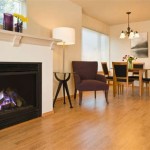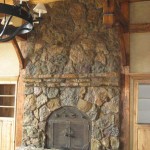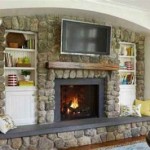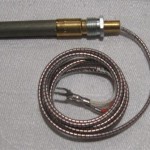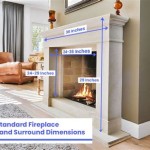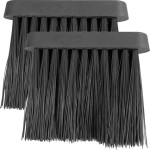Cost to Install a Gas Fireplace Insert: A Comprehensive Guide
A gas fireplace insert is a popular home improvement choice, offering the ambiance of a traditional fireplace with the convenience and efficiency of gas. Replacing an existing wood-burning fireplace with a gas insert can enhance heating capabilities, improve indoor air quality, and add aesthetic value to a living space. However, understanding the costs associated with this installation is crucial for budgeting and planning purposes. The overall cost is influenced by various factors, including the type of insert, installation complexity, and geographic location.
This article provides a detailed breakdown of the cost factors involved in installing a gas fireplace insert, offering a clear understanding of the potential expenses. It encompasses initial purchase prices, labor costs, necessary permits, and additional considerations that can impact the final investment.
Key Cost Factors Influencing Installation Price
Several components contribute to the final cost of installing a gas fireplace insert. These factors range from the insert itself to the modifications needed in the existing fireplace structure. Understanding each factor allows homeowners to anticipate the overall expenses more accurately.
1. The Gas Fireplace Insert Itself: The type and features of the gas fireplace insert heavily influence the upfront cost. Gas inserts are available in a range of styles, BTU outputs, and efficiency ratings. Vent-free (ventless) models, direct vent models, and natural vent models each have distinct price points, with direct vent inserts typically being the most expensive because of their enhanced safety features and venting requirements. Consider the desired heating capacity, aesthetic preferences, and energy efficiency when selecting an insert. More advanced features, such as remote controls, programmable thermostats, and realistic flame effects, will also increase the initial price. Expect to pay anywhere from $2,000 to $6,000 or more for the insert itself, depending on these factors.
2. Installation Labor Costs: Labor costs are a significant component of the overall installation expense. Hiring a qualified and licensed professional is essential for ensuring safe and compliant installation practices. Installation involves several tasks, including preparing the existing fireplace, running gas lines, installing venting systems, and connecting the insert. The complexity of these tasks, the accessibility of the fireplace, and the local labor rates all contribute to the overall labor cost. On average, labor costs can range from $500 to $3,000 or more, depending on the specific requirements of the installation.
3. Venting System Requirements and Costs: The type of venting system required for the gas fireplace insert significantly impacts the overall cost. Vent-free inserts do not require external venting, which can save on installation expenses. However, they may have limitations in certain jurisdictions and are subject to specific safety regulations. Direct vent inserts, which are generally considered safer and more efficient, require a dedicated venting system that runs to the outdoors. This venting system can be installed through a wall or roof and typically costs between $200 and $1,000 or more, depending on the complexity and materials required. Natural vent inserts utilize the existing chimney, but often require a chimney liner for safe and efficient venting. The installation of a chimney liner can add between $500 and $2,500 to the total cost.
4. Gas Line Installation or Modification: Most gas fireplace inserts require a dedicated gas line connection. If there is an existing gas line near the fireplace, it may be possible to tap into it. However, if a new gas line needs to be run from the main gas supply, this can add a significant cost to the project. The cost of gas line installation depends on the distance from the main gas supply, the complexity of the run, and local plumbing codes. Expect to pay between $250 and $1,500 or more for gas line installation, depending on these factors. It is imperative to hire a qualified and licensed plumber to ensure the gas line is installed safely and according to code.
5. Fireplace Preparation and Modification: Preparing the existing fireplace opening for the new gas insert is a necessary step that can incur additional costs. This preparation may involve cleaning the firebox, removing existing dampers, and potentially modifying the fireplace opening to accommodate the insert. If the fireplace opening is too small, it may need to be enlarged, which can add to the labor costs. In some cases, the existing hearth may need to be modified or replaced to comply with safety regulations and accommodate the new insert. These modifications can range from a few hundred dollars to several thousand dollars, depending on the extent of the work required. The structural integrity of the existing fireplace should also be assessed to ensure it can safely support the new insert.
6. Permits and Inspections: Most jurisdictions require permits for gas fireplace insert installations, and these permits come with associated fees. Permit costs vary depending on the location and the scope of the project but typically range from $50 to $500. Inspections are also required to ensure the installation meets local building codes and safety standards. These inspections are typically conducted by a local building inspector and may involve additional fees. Obtaining the necessary permits and undergoing inspections is crucial for ensuring compliance and avoiding potential fines or safety hazards.
7. Additional Features and Accessories: The cost of a gas fireplace insert installation can also be influenced by additional features and accessories. These may include decorative fronts, log sets, remote controls, programmable thermostats, and blowers. Decorative fronts can enhance the aesthetic appeal of the fireplace and typically range from $100 to $500. Log sets provide a realistic flame appearance and can cost between $100 and $500, depending on the material and design. Remote controls and programmable thermostats offer added convenience and can cost between $50 and $300. Blowers help circulate warm air into the room and can cost between $100 and $400. Consider which features and accessories are essential for your needs and budget when planning the installation.
Breaking Down the Costs: A Detailed Example
To further illustrate the costs involved, consider a hypothetical scenario: a homeowner wants to replace a wood-burning fireplace with a direct vent gas fireplace insert. The existing fireplace is in relatively good condition, and there is an existing gas line nearby, but it needs to be extended. Here's a potential breakdown of the costs:
Gas Fireplace Insert: A mid-range direct vent gas fireplace insert with a BTU output suitable for the room size, featuring a realistic log set and remote control, costs approximately $3,500.
Installation Labor: Preparing the fireplace, extending the gas line, installing the direct vent system, and connecting the insert takes approximately two days of labor at a rate of $80 per hour, totaling $1,280 (2 days x 8 hours x $80/hour).
Direct Vent System: The direct vent system, including the necessary pipes and fittings, costs approximately $600.
Gas Line Extension: Extending the existing gas line to the fireplace location costs approximately $400.
Permits and Inspections: The necessary permits for the installation cost $200.
Additional Features: The homeowner chooses to add a decorative front for $200.
Total Estimated Cost: Adding these costs together, the total estimated cost for the gas fireplace insert installation is $3,500 (insert) + $1,280 (labor) + $600 (vent system) + $400 (gas line extension) + $200 (permits) + $200 (decorative front) = $6,180.
This example provides a general idea of the potential costs involved. However, the actual costs may vary depending on the specific circumstances of the installation. It is always recommended to obtain multiple quotes from qualified contractors to get a more accurate estimate.
Tips for Managing and Reducing Installation Costs
While the cost of installing a gas fireplace insert can be significant, there are several strategies homeowners can employ to manage and potentially reduce these expenses.
1. Obtain Multiple Quotes: One of the most effective ways to ensure you are getting a fair price is to obtain multiple quotes from different contractors. Compare the quotes carefully, paying attention to the details of what is included in each quote. Don't just focus on the bottom-line price; consider the quality of the materials, the experience of the contractor, and the warranty offered.
2. Choose a Less Complex Insert Type: Opting for a vent-free or natural vent insert can potentially reduce installation costs compared to a direct vent insert. However, it's important to consider the safety and venting requirements of each type and choose the option that best suits your needs and local regulations. Vent-free models might not be allowed in some areas.
3. Handle Some of the Preparation Work Yourself (If Possible): While it's essential to leave the gas line and venting system installation to qualified professionals, you may be able to handle some of the preparation work yourself, such as cleaning the firebox or removing the existing damper. However, be sure to consult with the contractor before undertaking any work to ensure it is done safely and correctly.
4. Look for Rebates and Incentives: Many utility companies and government agencies offer rebates and incentives for energy-efficient appliances, including gas fireplace inserts. Check with your local utility company and energy efficiency programs to see if any rebates are available. These rebates can help offset the initial cost of the installation.
5. Schedule the Installation During Off-Peak Season: Contractors may offer lower rates during the off-peak season, typically in the spring or summer. Scheduling your installation during these times can potentially save you money on labor costs.
6. Consider Financing Options: If you are unable to pay for the installation upfront, consider exploring financing options. Many contractors offer financing plans, or you may be able to obtain a personal loan or home equity loan. However, be sure to compare the terms and interest rates of different financing options before making a decision.
Installing a gas fireplace insert is a valuable home improvement that can enhance comfort, efficiency, and aesthetic appeal. By understanding the various cost factors involved and employing strategies to manage and reduce expenses, homeowners can make informed decisions and ensure a successful and cost-effective installation.

How Much Does A Gas Fireplace Cost Fireplaces Direct Learning Center

How Much Does A Gas Fireplace Cost Fireplaces Direct Learning Center

Gas Fireplace Insert Cost Forbes Home

Gas Fireplace Cost Guide Unit Add Ons Installation More

How Much Does It Cost To Install A Gas Fireplace Homeserve Usa

Gas Fireplace Installation Cost Dbs Inc

Estimated Page Fireplaces Stoves Inserts Wood Gas Pellet

What Does It Cost To Install A Fireplace Vs Wood Stove Stamford Fireplaces

2024 Gas Fireplace Insert Costs

2024 Fireplace Installation Costs Gas Wood Burning Electric

